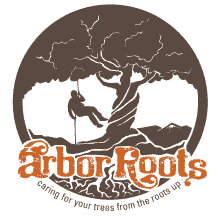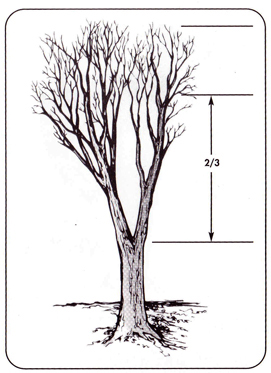Cabling & Bracing
|
Cables should be installed at least two-thirds the distance from the crotch to the branch tips. |
It is important to understand when a tree might be helped by the installation of cables or bracing rods and to recognize the limits of cable systems. It should also be known that when cabling or bracing a tree, the Arborist takes on a future responsibility to the client. Periodic inspection of cables is required to ensure proper functioning of the cable system. Cables should be installed at least two-thirds the distance from the crotch to the branch tips. Cabling and bracing each involve the installation of hardware in a tree. Anytime hardware is installed in a tree, there will be wounding and a risk of decay. The reason we would consider installing cabling or bracing would be to provide extra support to a tree by limiting the movement of limbs, or to support heavy limbs by connecting two or more together. When used wisely, they may reduce the risk of failure and extend the life of a tree. |
Additional support may be needed due to split or decayed unions, or unions with included bark (bark that becomes embedded in a crotch between branch and trunk or between branch and co-dominant stems and causes a weak structure).

In determining whether cabling or bracing is needed, the condition of the tree should be considered. If the root system is not structurally sound, or if the tree contains extensive decay, removal of the tree might be preferable. Hazardous trees can not be made 100% safe by the use of cabling and bracing. Also, before installing cabling or bracing in a tree, the tree should be properly pruned to remove hazardous limbs and reduce the weight of the limbs to be cabled.
Our arborists practice safe cabling and bracing techniques that have been set forth by the ISA. The ANSI A300 standards for tree support systems specify minimum hardware sizes for various size limbs. Having the knowledge to select the appropriate hardware for different trees and placement of the cable is key to the success of the system.
When possible, Arbor Roots prefers to use non-invasive cabling systems such as Cobra Cable or Tree Save. This technique allows us to safely cable a tree without placing hardware or drilling into the tree.


